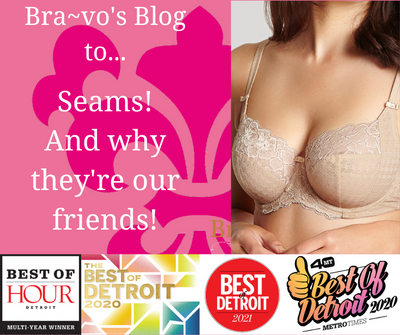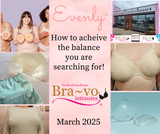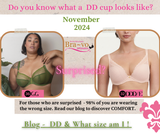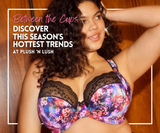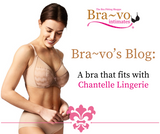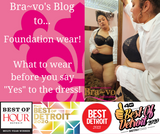Seams
She may not be the friend you want, but she’s the friend you need.
Welcome Back! A little introduction…
Welcome back to the Bra~vo Blog! To celebrate Bra Education and the New Year, I’d like to dedicate this blog to a very special type of bra, one that many of us hold near-and-dear to our hearts. If you’re the studious kind of Bra~vo Believer, you may already know which bra I’m talking about, and if you’re brand new to the Bra~vo Blog and are on the edge of your seat, then brace yourself! The bra I’m talking about, is of course, the seamed bra.
What is a Seamed Bra and why do they have such a bad rep?
Seamed Bras are colloquially known as cut-and-sews, but you might be familiar with my least favorite nickname for them — the dreaded “grandma bra”. You might be vaguely familiar with this style of bra, it’s the one in the very back of the lingerie department, untouched by human hands. Or, if you’re like me, it was your first experience with a bra without even knowing it: the memories of watching (or sometimes helping) your mother or grandmother get into her white non-wired Playtex.
It’s for this reason that Seamed Bras are sorely misunderstood and underappreciated by the general public, and for some very fair reasons. It wasn’t all that long ago when the average seamed-bra wearer had to choose between beige, black and white (not very exciting, I know). Many people aren’t aware of the variety these bras come in or just how supportive they actually are, because we’re a culture that relies heavily on chains of supply-and-demand. What women experience at easily accessible department stores are often scratchy, ill-fitting “lace” bras that stretch and tear within days to weeks of wearing them. But with technology on the rise, these styles now offer a greater variety of shape, structure, colors and prints with different necklines than any other style!
If they’re seamed bras, why are they called cut-and-sews?
Seamed Bras are often referred to as cut-and-sews because they’ve quite literally been cut and sewn together! The process of producing these types of bras can be a bit tedious, so I’ll just share the important parts: these styles are often crafted from high-end, durable fabrics like tulle (most bras are made with tulle as the base!), embroideries and various types of luxurious lace. It’s a combination of these panels of fabrics that will allow the cup to have more structure, and more durability than its T-Shirt Bra counterpart (we’ll get to these later).
Seams, and why they matter…
Now you might be wondering how stretch lace and tulle can support breast tissue, and you’d be right to wonder what it is that makes this combination so special! The answer is simple: seams! Seams are like the foundation of your house, you might have a beautiful roof and siding, but what good are those things if there’s no concrete slab to support it!
Seams, they’re never gonna give you up, they’re never gonna let you down, run away or desert you. Seams are literally there to support you. Depending on how many panels of fabric a certain bra style requires, you can guarantee to see at least one seam, and as many as 3 or 4!
Seams sort of help direct breast tissue, like a crossing-guard directing traffic. For instance; vertical seams lift breast tissue upwards from the bottom, giving great visual uplift; horizontal seams direct breast tissue forward, allowing for great depth and dimension; diagonal seams accomplish a little bit of both! It’s a combination of these seams that give us our desired shape!
Different day, different seam…
While it’s true seams help direct breast tissue and give us shape, it’s important to know how those seams, and the length of each seam can impact your shape!
My average bra size is 32GG (U.K sizing), and this is how different seamed bras change my breast shape!
- Vertical Seam: In the photo above, I am wearing the Scantilly Sheer Chic Balcony Bra in “Flame Red”. This particular style has very prominent vertical seams, which are directing my breast tissue upwards, thus creating great visual uplift.
- Horizontal Seams: Above, I am wearing Louisa Bracqs Tribal in “Noir”. This style has one vertical seam connecting panels of fabric at the side, which helps very little with visual uplift. However, this style was the closest I could get to a bra that has 1 horizontal seam. You can see how this is directing my breast tissue forward, almost creating a sort of “duckbill” shape. In a top, this will slim down my silhouette and minimize the appearance of my bust from the front, but will create a defined profile.
- Combination Seams: I am wearing Elomi’s Lucie in “Mambo”. This particular bra has a combination of vertical and horizontal seams. You can see how the vertical seam is bringing my breast tissue upwards without creating a profile that is too high for my frame, or leaving me feeling too wide-set. However, because of the diagonal/horizontal seam, I am still experiencing a nice amount of side-cup containment!
- Above, I am wearing the Elomi Lucie in “Mambo” with one of my thinner knit t-shirts, as this is often the wardrobe piece I hear about the most where it concerns the visibility of seams. Of course, when you are wearing a thicker-knit sweater cotton blend, your seams are virtually invisible!
Myth Busting (pun intended!)….
Now, I hear a lot of women with a lot of worries in the fitting room, and to them I say: worry no more! There are a lot of myths going around about lace bras lacking support, or women being afraid of their seams showing. Let's take a peak at some of these concerns together…
- Lack of support: Cut-and-sew styles like the ones pictured above offer excellent support, and for many women are actually more supportive than the highly-demanded T-Shirt or moulded bra. This is because T-Shirt and Moulded bras have a predetermined shape, which is often uniform and round. The way women fill out T-Shirt bras is completely dependent on their own breast shape, and as a result we don’t often see “perfect” when we fit these styles.
- Nipple Visibility: When I’m assisting guests in the fitting room, the number one concern I hear regarding this style of bra is whether or not they’ll have “high beams” or “low beams”. I get it, the idea of having your headlights on can seem a bit intimidating! But you know what I say? Everyone has them! Nipple schmipple. But really, more often than not the seam will lay flush against this area, allowing for a flat and discreet finish. If you’re dead-set on having this style, but need that added protection, ask your fitter about pasties!
- Seam Visibility: It’s true that you may not have the most polished and seamless finish in these styles, but the seams do soften with time and eventually become very minimalistic depending on the wardrobe. I’ll be the first to tell you that when I started off as a Bra-Fitter, I only wore T-Shirt Bras, but now I have exactly 43 cut-and-sews and I don’t care who sees my seam! My thought process is that if anyone mentions anything, they’re too close!!!
In conclusion…
If you’re a dedicated Bra~vo Believer, chances are you have plenty of these styles in your Bra Wardrobe. If you’ve been a guest with us before but only wear T-Shirt Bras, then for anything, even if it’s just for giggles, ask about trying on a Seamed Bra (we call them Basics! Because basically everybody needs them). If you’re brand new and are wanting to give something new a try (like a bra that fits!) Seamed Bras are a great place to start.
I hope that if I’ve inspired you to do anything by writing this blog, it’s to give new things a chance! They just may surprise you!
To book an appointment for your very own Bra~vo Experience visit our website and arrange an appointment there or call us at 248-582-7286. Click here to contact us and book your bra fitting appointment. Don’t forget to subscribe to our newsletter to keep up to date with our blogs, fitting tips and beautiful new bras!

